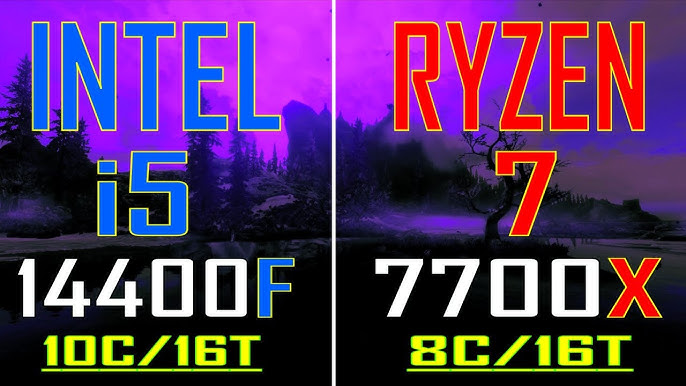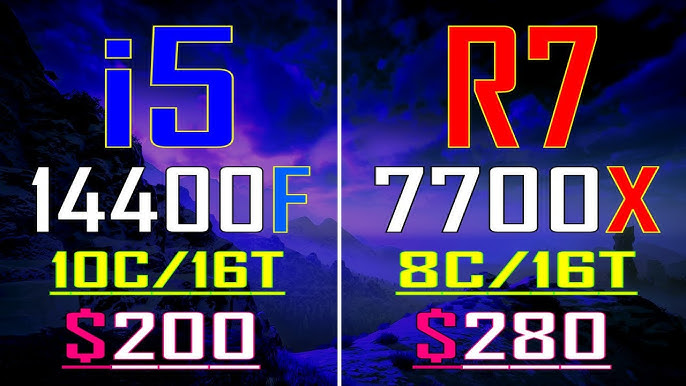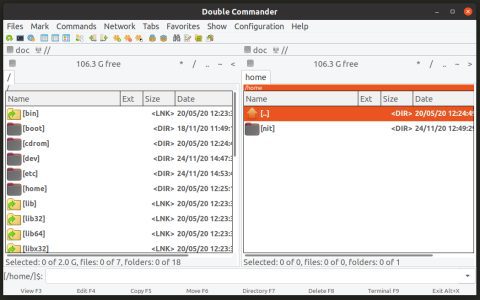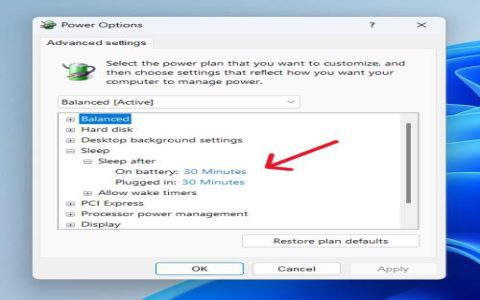Core Specifications
The AMD Ryzen 7 7700X and Intel Core i5-14400F represent different performance tiers and target users, each with distinct advantages.
AMD Ryzen 7 7700X:
- Cores/Threads: 8 Cores / 16 Threads (all Performance-cores)
- Architecture: Zen 4
- Base Clock: 4.5 GHz
- Boost Clock: Up to 5.4 GHz
- L3 Cache: 32MB
- TDP: 105W
- Socket: AM5
- Integrated Graphics: Yes (RDNA 2)
Intel Core i5-14400F:

- Cores/Threads: 10 Cores (6 P-cores + 4 E-cores) / 16 Threads
- Architecture: Raptor Lake Refresh
- P-core Max Turbo Frequency: Up to 4.7 GHz
- E-core Max Turbo Frequency: Up to 3.5 GHz
- L3 Cache (Intel Smart Cache): 20MB
- Processor Base Power (PBP): 65W
- Maximum Turbo Power (MTP): 148W
- Socket: LGA1700
- Integrated Graphics: No (F-variant)
Performance Comparison
Gaming: The Ryzen 7 7700X generally delivers superior gaming performance, particularly noticeable at 1080p and 1440p resolutions where CPU limitations are more pronounced. Its higher clock speeds and robust Zen 4 single-core performance are key contributors. While the Core i5-14400F is a very competent gaming CPU offering good value, the 7700X typically holds an edge in raw frame rates.
Productivity: In multi-threaded productivity workloads, the landscape is more nuanced. The Core i5-14400F, with its 6 Performance-cores and 4 Efficient-cores, can excel in highly parallel tasks. However, the Ryzen 7 7700X's 8 powerful Zen 4 P-cores are also extremely effective and often lead in tasks sensitive to single-core speed or those that don't efficiently scale beyond 8 fast cores. For applications like video editing, rendering, and compilation, performance can vary based on the specific software's optimization.
Platform and Cost Considerations
Ryzen 7 7700X (AM5 Platform):
- Requires DDR5 memory exclusively.
- AM5 motherboards typically offer modern features, including PCIe 5.0 support for GPUs and NVMe storage.
- AMD has pledged support for the AM5 socket through at least 2025, offering a stronger future CPU upgrade path without needing a motherboard replacement.
- The initial platform cost (CPU + AM5 motherboard + DDR5 RAM) is generally higher than an LGA1700 setup with DDR4, though DDR5 prices have become more competitive.
Core i5-14400F (LGA1700 Platform):
- Offers memory flexibility with support for both DDR4 and DDR5. Opting for DDR4 can lead to a lower initial build cost.
- The LGA1700 socket is at the end of its generational lifespan, meaning CPU upgrade options on the same motherboard are very limited.
- The "F" designation signifies the absence of integrated graphics, necessitating a discrete GPU for system operation. This is an added cost if one isn't already part of the build plan. The 7700X's iGPU can be useful for troubleshooting or basic display output.
Key Differentiators
- Peak Gaming & Single-Core Performance: Advantage to Ryzen 7 7700X due to higher clocks and IPC.
- Multi-Core Throughput: Competitive. The 14400F's E-cores can provide an edge in some highly threaded scenarios, while the 7700X's strong P-cores excel in others.
- Integrated Graphics: Present on Ryzen 7 7700X; absent on Core i5-14400F.
- Platform Entry Cost: Often lower for the Core i5-14400F, particularly when paired with DDR4 motherboards and RAM.
- Power Consumption: The 14400F has a lower Processor Base Power (65W vs. 105W for the 7700X). However, under full load, the 7700X can be more power-efficient relative to its performance than the 14400F when the latter hits its Maximum Turbo Power.
- Future Upgrade Potential: Significant advantage for the Ryzen 7 7700X on the AM5 platform.
Summary: The Ryzen 7 7700X is positioned as a higher-tier CPU offering leading gaming performance and strong productivity capabilities, coupled with a more future-proof platform. The Intel Core i5-14400F is an excellent value proposition for mid-range systems, providing solid gaming and multi-threaded performance, especially when budget constraints favor DDR4 memory. The choice depends on priorities: maximum performance and upgradeability (7700X) versus upfront cost-effectiveness (14400F).













